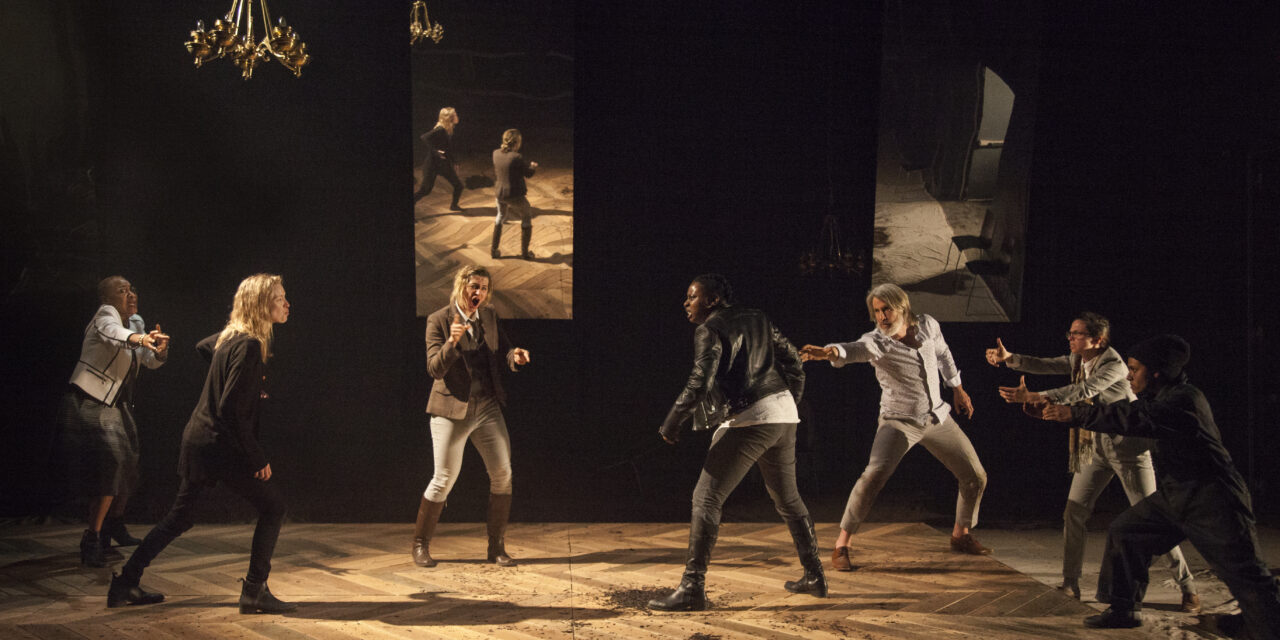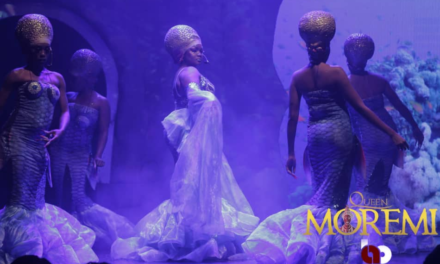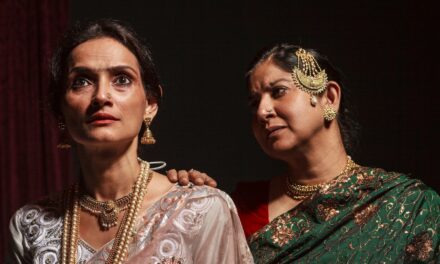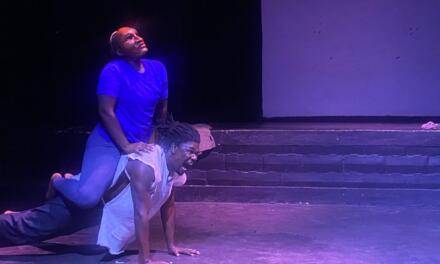How can an adaptation of Shakespeare enable us to reflect on power dynamics embedded in the aesthetic values of Western theatre practices? Why Not Theatre’s Prince Hamlet, adapted and directed by Ravi Jain, is a performative exploration of the relationship between aesthetics and disability. Prince Hamlet is a gender-bent, bilingual play which uses English and American Sign Language (ASL).
‘Universality’ and ‘Singularity’
Chris Thurman criticizes the discourse around the term ‘universality’ in Shakespeare studies and suggests an alternative term ‘singularity’ in his essay (Thurman 2017). Challenging the implicit imperialism entailed with the term ‘universal’, Thurman lists terms around Shakespearean productions that implicitly follow the center-periphery model: Foreign Shakespeare, Global Shakespeare, International Shakespeare, Postcolonial Shakespeare and so on. Most of them, perhaps with the exception of Postcolonial Shakespeare, place ‘Shakespeare’ at the center and the rest of the world at a periphery, merely at the receiving end of his genius. Thurman’s usage of ‘singularity’ is useful as a political category because it departs from the conventional discourse to arrive at individual performances and the possible impact that might have for Shakespeare studies. Individual performances are shaped by local context and hence do not claim to be ‘universal’. And yet, precisely these performances are fertile terrains where the ‘universality’ of Shakespeare is all the more visible.
‘Universality’ is a vacuous term, a signifier without a signified. Unless it is grounded in performance, the term means nothing. Prince Hamlet challenges the conventional claims of universality in Shakespeare while also showing how adaptations of a text can be enabled to allude to universality. Premiered in 2017, and returned again recently on Canadian Stage in Toronto, Prince Hamlet received rave reviews and won the hearts of audiences and critics alike. The success behind Jain’s adaptation is the questions it asks. Who gets to tell the story? How does having a differently-abled actor on stage shape the story? How does the use of ASL affect the form?
Disability and bilingualism
The bilingualism in this play is not superficial. It does not use ASL as a subtitle to English. Rather, both languages are intermingled and integrated in a way that they both become absolutely essential for the play. Also, when most plays cater to the able-bodied audience, Prince Hamlet flips this equation. The play uses both ASL and English but there are times when ASL dialogues are not translated into English. It is the hearing audience members who not only need to put effort to make sense of the dialogues but also are encouraged to grapple with the experience of not being able to understand or have access to everything. Prince Hamlet re-imagines the story of Hamlet through Horatio’s perspective. Horatio, played by Dawn Jani Birley, a brilliant, Canadian deaf actress, becomes the central character. The play questions the ideas of accessibility and accommodation which are often associated with disabled bodies. This power dynamic is reversed in the play by making the able-bodied audience aware that they are the ones who need “accommodation” and “translation”. Jain’s play is committed to questioning the aesthetic choices and norms in the history of Western theatre. Prince Hamlet is thus also a meta-theatrical commentary.
Through its formal choices, it demonstrates how disability is often socially constructed and how the idea of accessibility is closely tied to the norms of aesthetics. The experiences and bodies of disabled people are brought to the center stage. There are many scenes in which the actor who is speaking ASL is at the center stage and the rest of the actors speaking English are in the periphery. At the same time, the play questions the idea of “center stage” through the design. There is no ‘central’ acting area. Rather, the entire stage, including the periphery of the stage and the corners are used as acting areas. It truly disrupts the idea of the ‘center’ through its form.
The stage has three large mirrors in the background and a huge mat on the ground surrounded by heaps of mud on all sides. We see several moments when the actors are facing the mirror with their back turned towards the audience. The audience embers see the actors’ reflections in the mirror. Mirrors not only extend the stage through the reflection but also exacerbate the effect by sheer multiplication of images. The scene where Hamlet imagines his mother having sex with Claudius is particularly shocking and disturbing because it is mediated and reflected, and hence, multiplied through the mirrors. More importantly, while the mirrors provide the mediated access to the actors’ expressions, Dawn Jani Birley, who communicates using ASL, is turned towards the audience. Prince Hamlet plays with the idea of mediated and “translated” aesthetic experience which, as Ravi Jain in his pre-show talk noted, is common to ASL speakers. For differently-abled people, especially deaf people, conversations are often mediated. The play again reverses this experience by disrupting the able-bodied audience members’ direct access to the actor’s expressions while the ASL-speaking audience members can directly see the actor.
Gender-bending for real
Prince Hamlet stands out for its gender bent cast. Most of the productions which claim to have gender bent cast swap genders superficially. This play, on the other hand, takes the principles of gender-bending seriously and questions the way in which the performance of gender in theatre often takes part in perpetuating gender binaries and stereotypical ideas of masculinity and femininity. The actors truly attempt to shed the mannerisms associated with masculinity and femininity in their acting. Claudius wears a floral shirt and behaves in a way that doesn’t particularly fit in the traditional idea of masculinity of a King. Ophelia’s femininity is in stark contrast with the male actor who played it. The man’s masculinity is not downplayed, but rather kept intact to create a truly novel, androgynous Ophelia. The same stands true for Hamlet’s character. The actors mostly wear gender-neutral costumes. For example, Hamlet wears black jeans and a black t-shirt, and Ophelia wears white pants and sneakers.
The famous climax of Shakespearean Hamlet features the violent fight between Hamlet and Laertes which lead to their deaths. This scene is radically different in Jain’s adaptation. A scene which is full of dramatic actions is imagined as disturbingly static. We see Horatio at the center and all the other characters surrounding him with their back towards the audience. Horatio then narrates the story of the last scene to the audience in ASL; once in a while other characters are given a chance to speak. The emotionally moving scene ends with characters slowly dying and lying down on stage while Horatio stands there, crying, still alive to bear the burden of telling the story, and reliving everything that happened to Hamlet through memory. There is no music, no sound. The play ends with the deafening silence of grief and loss. We see, in silence, tears dropping from Horatio’s eyes, and slowly dissolving in darkness.
Notes:
Thurman, Chris. “From Shakespearean Singularity to Singular Shakespeares: Finding New Names for Will-in-the-world.” Shakespeare in Southern Africa, 2017: 1-13.
This post was written by the author in their personal capacity.The opinions expressed in this article are the author’s own and do not reflect the view of The Theatre Times, their staff or collaborators.
This post was written by Abhimanyu Acharya and Sheetala Bhat.
The views expressed here belong to the author and do not necessarily reflect our views and opinions.


















